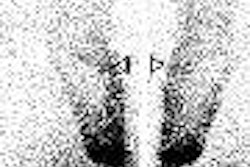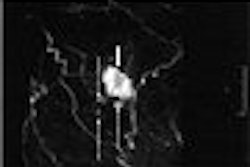The release of the Digital Mammographic Imaging Screening Trial (DMIST) report showed that digital mammography is as good -- and, in some cases, better -- at detecting cancers as film mammography. Since then, digital mammography has moved to the forefront. Facilities are now wondering whether they can afford to make the transition.
Digital technology brings with it the advantages of increased productivity, reduced chemistry, and lower film costs, but with its $400,000-plus price tag per unit, facilities may have a difficult time crossing the digital divide, according to Bonnie Rush, founder and president of Breast Imaging Specialists in San Diego.
Rush spoke during an HC Pro-sponsored audio conference, "Digital Mammography: Is it the right time and fit for your facility?"
In addition to the capital costs, a digital system's operating costs can be up to $135,000, Rush said, quoting an expert in the field. By comparison, an analog system's operating costs are $24,000 a year.
For a facility performing 12,000-15,000 exams per year, three years is the industry average to turn a profit with the digital system, she said.
However, note that those numbers may vary in different settings. Rush provided the following three case studies:
- With 25,000 patients a year, the Breast Center at Houston Northwest Medical Center took three years to be profitable.
- Another center with similar volume said it would take 2.5 years to be profitable.
- A third center that saw only 6,500 patients a year was profitable within three years, thanks to the addition of CAD.
Count your patients
When performing a cost analysis to determine whether you can afford to make the transition, your first consideration should be the number of patients you serve.
Facilities that have fewer than 10,000 patients a year should ask whether there's any potential to increase the patient base to help justify the purchase, Rush said.
If yours is the first facility in your area to make the digital transition, it's a great opportunity to lure patients from other facilities. A solid marketing campaign touting the advantages of digital technology can help bring in new patients.
On the other hand, if another facility in your area has already gone digital, some of your patients may have switched to that facility. It's difficult to get those patients back unless they are unhappy at the other facility, Rush said.
Other alternatives
However, keep in mind that the number of patients isn't the only factor to consider. There are ways to make digital mammography work for your organization even if you don't have the patient base to justify it, said Rush.
Low-volume facilities may want to wait for CR mammography, a potentially less expensive alternative to the DR systems currently on the market.
Although a CR mammography system created by Fujifilm Medical Systems USA is on the verge of Food and Drug Administration (FDA) approval, it has yet to be approved for use in the U.S. When it is, however, it may cost less than the current DR systems.
The Stamford, CT-based firm said that it expects its CR digital mammography system to receive approval by the second quarter of 2006.
The company submitted its final paperwork to the FDA in March 2005. The FDA has since been reviewing that application. The process typically takes 300 days and is currently at about 250 days into the process.
The next step will likely be for the FDA to issue a conditional approval, called an approvable letter. After reviewing the letter, the company will need to take additional steps outlined by the FDA before final approval is granted.
"CR may be less expensive when approved, but there is no official pricing yet," Rush said. She noted that it is an option to consider in the future.
In addition to holding out for CR, also consider which ancillary services you can offer to help justify the costs of digital mammography.
For example, if you add computer-assisted detection (CAD) to your offerings, you will be eligible for increased reimbursement, and it may help you meet your financial goals sooner, similar to the case study previously mentioned.
CAD is becoming to be considered a standard of care, Rush said. Therefore, facilities that stay with analog as well as those who will use digital should consider it. Luckily, when making the digital transition, CAD can be added seamlessly, she said.
Also think about other services you provide that could get a boost from digital screenings. For example, when you switch to digital, you will likely detect more cancers, which can boost other procedures that you offer such as biopsy procedures, radiation therapy, and reconstructive surgeries.
Also keep in mind that women typically choose the healthcare facilities used by their families, so if they're satisfied with their experience, it could result in additional business for your organization, whether it's with bone densitometry or other offerings.
Factor in all of these potential gains and savings when presenting your case for digital equipment.
"Larger hospital-based or hospital-affiliated organizations are going to have an easier time (justifying the conversion) because they are getting revenue from other areas as well," said Valerie Andolina, imaging technology manager at Elizabeth Wende Breast Clinic in Rochester, NY, who also spoke during the audio conference.
Everybody wants to know "What do I have to do to make it work for me?" Andolina said. "There is no one answer. Everyone works in a different environment, and everyone sees his or her patients in a different way. They all have different ways of handling this question."
The key is to ask yourself questions about how you work and what your facility does to determine how digital mammography can fit your budget without breaking the bank.
By Kelly Bilodeau
AuntMinnie.com contributing writer
May 11, 2006
The "Mammography Regulation and Reimbursement Report," is a 12-page monthly newsletter designed specifically for mammographic technologists and supervisors that is published by HC Pro. The periodical offers ideas for better practice management from peers, billing tips, MQSA regulatory updates and guidance, and business ideas related to breast imaging. For a free trial subscription, please click here.
Related Reading
MQSA reauthorization: What to expect and how to prepare, April 13, 2006
Increasing patient satisfaction seen in reduced wait times, March 28, 2006
Preparing for an MQSA inspection: Steps for a successful visit, March 2, 2006
ACR's breast imaging accreditation expands on MQSA, October 11, 2005
Male mammograms: Positioning tips to ensure image quality, August 18, 2005
Copyright © 2006 HC Pro



















